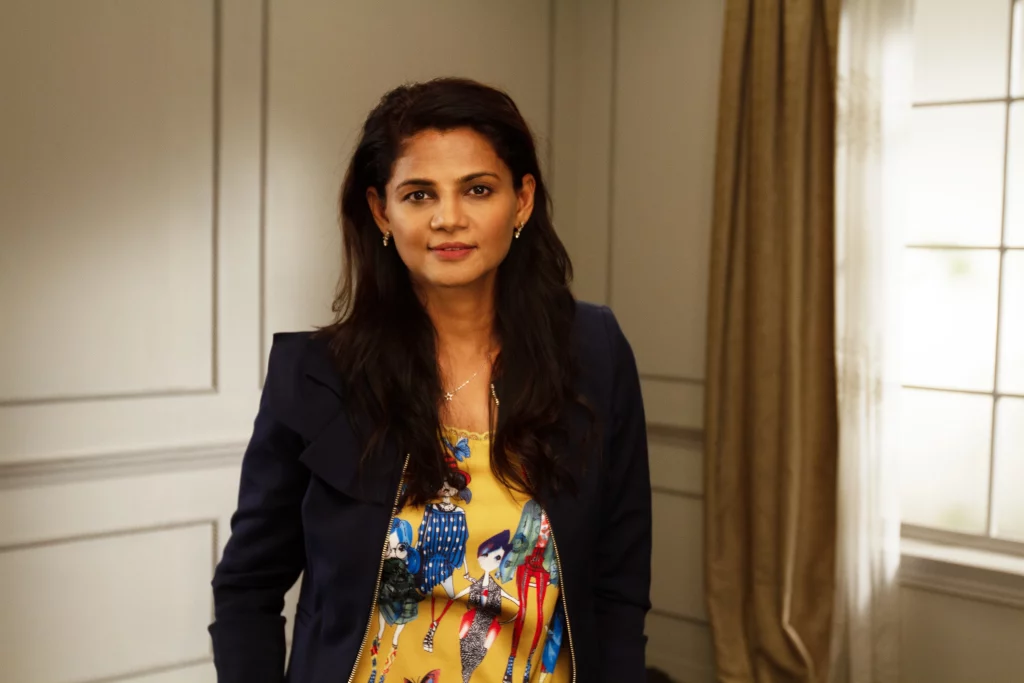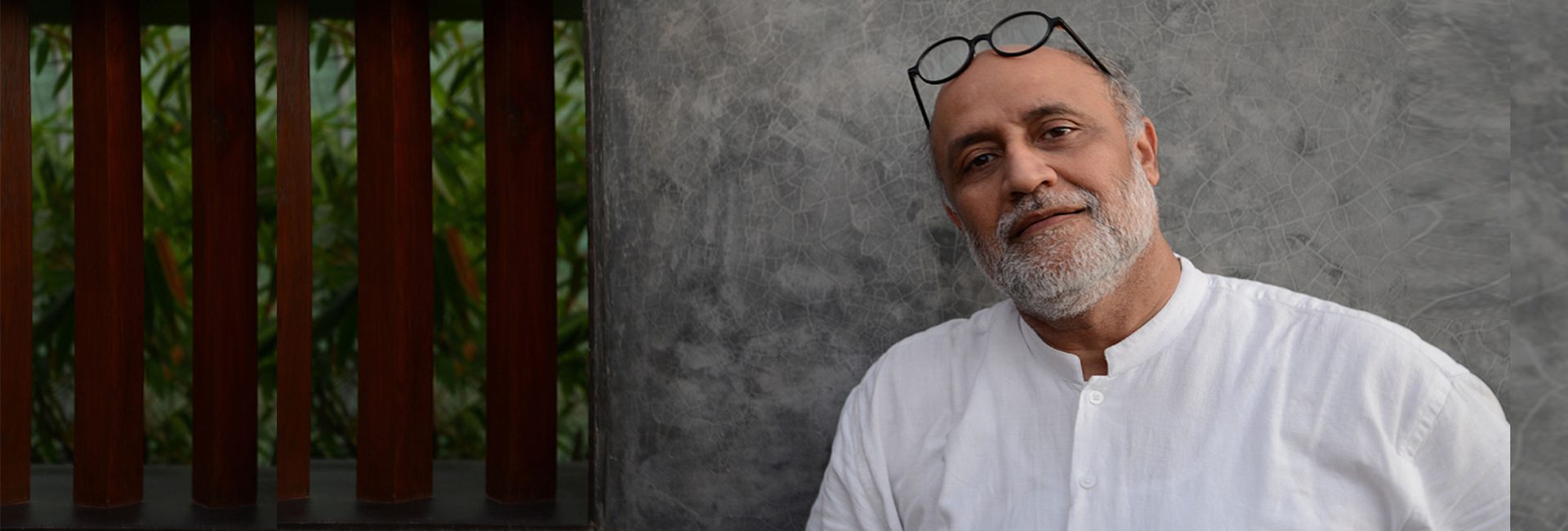(October 18, 2025) For architect Apoorva Shroff, versatility has always been her signature. From designing Bollywood icon Madhuri Dixit’s home to crafting workspaces and residences for marquee clients such as SoftBank, Prestige Group, ChrysCapital, General Atlantic, and the Jindals in India and China, she has continuously explored how design can transform experiences. Yet, in October 2023, at the peak of her creative journey, she felt an urge for reinvention.
In the middle of what she describes as a “little midlife reset,” Apoorva felt a strong urge to learn something new, and to push herself beyond what she already knew of design. So she packed her bags and travelled to Bali for what would become an incredible bamboo workshop. The experience turned out to be one of the most treasured of her life, a reminder that reinvention often comes from unexpected places. At the time, she didn’t know when, where, or how she would bring that learning back with her, but a few months later, it found its way into her work in the most meaningful way.
That journey of rediscovery found its most tangible expression at Ashoka University in Sonipat, where her project, a breathtaking bamboo installation titled The Hungry Caterpillar blends ecological consciousness, sustainability, and artistry into a living symbol of renewal.
View this post on Instagram
The Ashoka Project: Nature meets learning
As the founder and principal designer of Lyth Design, architect Apoorva Shroff is translating inspirations, ideas, and memories into efficient and practical spatial solutions.
If you walk into Ashoka University at Sonipat, it’s impossible to miss the towering 650 sq. mt structure made entirely of bamboo. This striking three-dimensional installation, titled The Hungry Caterpillar, took over a year to conceptualize and execute. The installation is symbolic of continuous learning, growth, nature, and mindfulness.
Standing 19 metres tall and interspersed among a canopy of trees, the structure uses slender bamboo woven at 45-degree angles, topped with crushed bamboo mats for natural shading. It’s a powerful expression of sustainable architecture, harmonizing with its environment while inviting reflection on the relationship between learning and ecology.
Global training, local roots
Ecological architecture has been central to Apoorva’s practice from the beginning. Her fascination with the field began early, inspired by her mother’s stories about architects who travelled the world seeking inspiration.
“My journey took a pivotal turn when I pursued my postgraduate degree at the University of California, Los Angeles (UCLA). Studying abroad not only exposed me to global design philosophies but also taught me how to run a creative practice—how to lead teams, balance innovation with practicality, and foster a culture where sustainability and aesthetics coexist. UCLA showed me that a successful studio thrives on vision, collaboration, and structured problem-solving, lessons I carry with me every day at Lyth Design,” she explains.
View this post on Instagram
Design detail
After UCLA, Apoorva returned to India in 2006 as a partner at reD. Along with the founder architects she played an instrumental role in building the then young firm, working on projects that bridged architecture and interiors.
Over two decades, Apoorva has built a practice that balances client expectations with experimental, thoughtful design. Her early projects in both residential and boutique commercial spaces evolved into large-scale developments, including collaborations with Ashoka University, and other prestigious projects. Throughout, she has championed sustainable materials and innovative construction techniques, ensuring each design is contextual and environmentally conscious.
She founded Lyth Design in 2022 with the vision of creating a boutique practice that transforms inspirations into practical, beautiful spaces. Today, Lyth Design is recognized for its balance of aesthetics, sustainability, and technology, integrating tools like 3D printing and exploring new materials in pioneering ways.
Each of Apoorva’s project begins with understanding the site, climate, and ecosystem. “My approach to materials reflects this philosophy: whether it’s bamboo, recycled plastics, or 3D-printed concrete, I look for solutions that reduce environmental impact while creating beauty and functionality,” she says.
International platforms
Her global exposure has led to recognition on international platforms. Apoorva served on the FRAME Jury and INDE Jury panels (2023–24), evaluating some of the most innovative architectural work worldwide. “Serving on the FRAME and INDE jury panels was both humbling and inspiring. It gave me the opportunity to engage with outstanding talent from across the globe, understand diverse design philosophies, and participate in conversations about the future of architecture and design. The experience reinforced my belief in the power of collaboration and the responsibility architects carry in shaping not just buildings, but communities and ecosystems,” she avers.

Apoorv Shroff during the bamboo workshop in Bali
Apoorva is also doing her bit for the next generation of architects by teaching, which she admits has been an immensely rewarding part of her journey. “Beyond Balwant Sheth School of Architecture, I’ve also taught at the Bhartiya Vidyapeeth School of Architecture in Pune, where I worked with students on creating thoughtful residential projects for artists and celebrities. For example, I presented the design of Madhuri Dixit’s house, sharing insights into translating personal narratives into spatial solutions while balancing aesthetics and functionality. I aim to equip the next generation not just with technical skills but with the mindset to challenge conventions and create spaces that are meaningful, responsible, and enduring,” she says.
Embracing the best of both worlds
Apoorva Shroff, believes in embracing the best of both worlds: staying rooted in India’s rich cultural and design heritage while also being open to global perspectives and practices. “It means bringing international learning back home, adapting it to local contexts, and contributing meaningfully to both Indian and global design discourse,” she says. Her journey has had its own challenges, the biggest one being convincing clients and collaborators to embrace unconventional materials or sustainable practices. “Overcoming these challenges has required patience, education, and demonstration. Another challenge has been pushing the boundaries of design while staying grounded in feasibility. I’ve learnt that thoughtful collaboration, persistence, and clear communication are key. I would also add that the journey is as much about personal growth as it is about professional success,” she opines.
The architect is inspired by nature, by materials, and by the endless possibilities that creativity offers. “I am also deeply motivated by the idea of learning continuously, whether from mentors, peers, students, or even the sites I work on. One life lesson I carry with me is that curiosity and perseverance are inseparable. “Embrace challenges as opportunities to grow, and design with responsibility, not just for the present, but for the future,” she says.

Apoorva Shroff
Aspirations of life
Apoorva aims to continue exploring sustainable materials and construction techniques, with a focus on education, research, and innovation. “I hope to undertake projects that are both environmentally responsible and culturally sensitive, while also expanding the studio’s work in large-scale institutional and public spaces. Beyond practice, I want to continue teaching, mentoring, and inspiring the next generation to think critically about design and its impact on the world,” she concludes.
- Follow Apoorva Shroff on Instagram
ALSO READ: Bijoy Jain: The architect breathes new life into sustainable design



